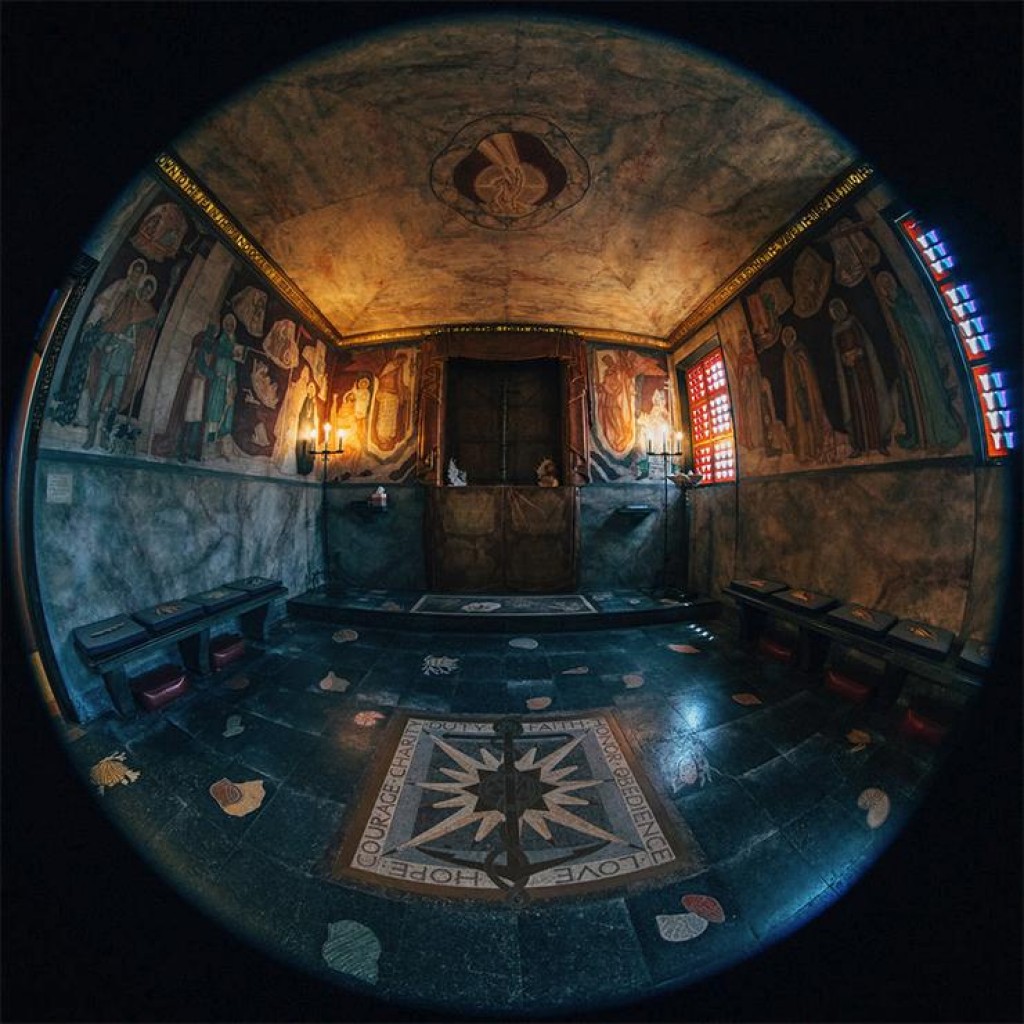
PROS
- 14fps burst shooting.
- 61-point autofocus system.
- Large shooting buffer.
- Dual Pixel AF for smooth Live View and video autofocus.
- 20MP full-frame image sensor.
- 3.2-inch touch LCD.
- Pro-grade build. In-body GPS.
- 4K video.
- CF and CFast card slots.
CONS
- 4K video is cropped.
- Clean HDMI recording for 1080p only.
- Omits Wi-Fi and in-body flash.
BOTTOM LINE
The Canon EOS-1D X Mark II is a pro-grade SLR with a best-in-class shooting rate, a full-frame image sensor, and an extensive lens library.
Design
The 1D X Mark II$5,999.00 at Amazon is virtually identical to its predecessor on the outside. It’s a big camera, with an integrated vertical shooting grip, a tough magnesium build, and extensive protection from dust and splashes. It measures 6.6 by 6.2 by 3.3 inches (HWD) and weighs about 3.4 pounds without a lens. There’s no built-in flash—not an issue for pro photographers who will likely reach for a Speedlite or use the 1D in conjunction with studio lighting—but the camera does have an in-body GPS receiver. When enabled it adds location data to photos, pinpointing where they were captured.

The 1D’s huge battery is rated for about 1,210 shots by CIPA, significantly less than the 3,780 images that the Nikon D5 nets by the same testing standards. The 1D X did a bit better than its rating in our field tests, staying on pace for about 1,300 images per charge, with the GPS enabled in the mode that only searches for location when the camera is turned on, but still doesn’t offer the same level of endurance as the D5.
The optical viewfinder is huge, with a 0.77x magnification ratio, just a bit larger than you get with the D5. A black outline shows the area of the frame covered by the autofocus system, with active points lit up in red during focus. Transparent overlays show up when you’re changing settings, allowing you to easily set the shooting mode, drive mode, white balance, and focus mode without taking your eye away from the finder. When you’re shooting under artificial light at high speed the Flicker indicator will show, to let you know that the drive mode is adjusted to keep brightness consistent from shot to shot. There’s also an exclamation point that appears on rare occasion. You can dive into the menu to individually toggle any of the four instances when you’ll see it—when the camera is set to record monochrome images, when White Balance has been corrected, when one-touch image quality has been set, or when the spot meter is activated. Chances are, you won’t see it that often.

Exposure settings and the number of shots left on the memory card are displayed in a row below the optical view, lit up in green. There’s also an LCD to the right of the image; it displays the EV compensation level, the number of shots available in the shooting buffer, the active file format, and a battery life indicator. Diopter correction is available, and there’s a built-in cover to block light from entering via the finder when making long exposures.
Canon has done everything possible to make 1D X photographers comfortable when moving up to the Mark II. There are four buttons on the front of the body, two each accessible with your right hand when shooting in landscape or portrait orientation. By default the upper button activates the registered AF point and the lower stops down the lens to preview depth of field. Both functions can be reconfigured via the Custom Controls menu setting. The only other button on the front plate is the lens release.

Three buttons sit on the top plate, to the left of the viewfinder hump and hot shoe. Each requires you to first press the button and then use the top or rear control dial to change settings. The forward button, Mode, serves a single purpose, but the middle and rear buttons do double duty—Drive/Focus mode and Metering/Flash Compensation, respectively. To the right of the viewfinder you’ll find buttons that activate the monochrome LCD backlight, set the White Balance, EV Compensation level, and ISO.
The top LCD doesn’t display any information when the 1D X is turned off. When the camera is on it displays the shooting mode, exposure settings, shots left on the memory card, drive and focus modes, the metering pattern, ISO, Auto Lighting Optimizer status, and the current EV compensation setting. When the backlight is on the LCD has an orange tint.

Both the landscape and portrait shooting grip features an M-Fn button, a control dial, and the shutter release. By default the M-Fn button activates Flash Exposure Lock (FE-Lock), but it can be reconfigured via the menu. M-Fn has other uses. It is used to toggle through AF area settings after you’ve pressed one of the two rear AF Point Selection buttons.
Rear controls include the aforementioned AF Point Selection; it’s located at the top right corner and is joined by Autoexposure Lock (AE-L) and AF-ON to its left. These three buttons are duplicated at the bottom right corner, so they can be accessed in the same manner when using the camera in either landscape or portrait orientation.

You’ll also find Menu and Info buttons on the rear, to the left of the eyecup, and the Live View button and still/video toggle switch to the right. Dual joysticks, one for each orientation, are used to select the active focus point—you’ll need to first press the AF Point Selection button to use these by default. I prefer to enable direct AF Point Selection in the menu, which makes it a lot easier to select the focus point.
Canon also puts the power switch on the rear, along with a large control dial with a center Set button, and the Q button, all located to the right of the color LCD. Q displays an on-screen bank of shooting settings. Despite having touch capability, you’ll need to use the joysticks, control dial, and Set button to navigate through them.

Below the color display is another monochrome information display. Its backlight is activated by the same button as the top LCD. It displays memory card status, file format, GPS status, and lets you know if a file transfer is in progress, either via Ethernet or an add-on Wi-Fi module. A LAN indicator light, as well as Play, Zoom, Delete, and Lock/Voice Memo controls are located above it.
The 3.2-inch color touch-screen LCD is used for Live View framing and focus as well as image review. Touch functionality is very limited—you can use it to set a focus point when shooting stills or video in Live View, but that’s it. The LCD is crisp thanks to a 1.62 million dot resolution. The Nikon D5 has a sharper screen—2.4 million dots—but unless you’re looking at the two side-by-side, you’re not going to be able to tell the difference.

The memory card slots are protected by a locking door. Slot 1 accepts a CompactFlash card and Slot 2 supports the newer CFast card format. Despite a similar appearance and shape, the cards use a different data interface, so you’ll want to take care to put your card format of choice in the correct slot. CFast memory is still quite expensive—even more than the competing XQD format—but you’ll want to use it if you see yourself using the 14fps burst capability on a regular basis.
All connection ports are located on the left side. They include a wired remote connector, Ethernet, microphone, headphone, PC Sync, mini HDMI, and micro USB 3.0. The battery is also removed via the left side. The 1D ships with a single battery, and includes a large charger that can handle two simultaneously. It’s physically identical to the cell used by the original 1D X, and you can use the older battery in the new camera—but the maximum shooting rate will drop to 12fps.

Performance and Autofocus
Canon EOS-1D X Mak II : Benchmark Tests The 1D X Mark II is Canon’s marquee camera—the one that you see on the sidelines on Monday Night Football and at all major Olympic events—so you’d expect its performance to be phenomenal. It doesn’t disappoint in terms of speed. The Mark II starts, focuses, and fires off a shot in just 0.5-second, and confirms focus and fires in about 0.1-second in bright light and about 0.3-second in dim conditions. Focus in Live View is extremely quick, with almost no delay required to lock focus in both bright and dim light
The 1D X Mark II is Canon’s marquee camera—the one that you see on the sidelines on Monday Night Football and at all major Olympic events—so you’d expect its performance to be phenomenal. It doesn’t disappoint in terms of speed. The Mark II starts, focuses, and fires off a shot in just 0.5-second, and confirms focus and fires in about 0.1-second in bright light and about 0.3-second in dim conditions. Focus in Live View is extremely quick, with almost no delay required to lock focus in both bright and dim light.
When shooting with the optical finder the 1D X rattles off shots at up to 14fps with focus and exposure checked for each. When paired with a Lexar 540MBps CFast 2.0 card it can keep that pace up for 160 Raw+JPG or 2,816 Raw images before slowing down. If you’re shooting in JPG format, you can keep shooting for even longer. With more than 2,000 shots in the Raw buffer, you never have to worry about the camera not being ready to take a photo. If you need to shoot faster you can switch to Live View mode and shoot at 16fps. You’ll see each shot show on the rear LCD, so you can track action, but the focus and exposure are locked after the first one.

The Mark II features a 61-point autofocus system, the same number of points as its predecessor, but it is an improved one. The points are further apart, so the area of the frame covered by AF is a little larger. Additionally, each point can focus with a f/8 lens, so photographers who employ a 1.4x or 2x teleconverter to extend the reach of a f/4 or f/5.6 telephoto lens can still take full advantage of autofocus.
The 1D X gives you flexibility in choosing a focus point. You can select an individual point, a grouped cluster of 5 or 9 points, or the left, center, or right third of the focus area—all of which can be moved using the rear joysticks.

You can also set the 1D X to automatically select a focus point (or points). This is where Canon’s Intelligent Tracking and Recognition (iTR) system comes into play. The Mark II automatically recognizes subjects and tracks them as they move through the frame. I found that it worked well in field tests, locking onto human faces as well as wildlife. But if you want the camera to track something, you have to rely on it first recognizing the subject. You don’t have the flexibility of manually selecting a subject to track as you do with the Nikon D5.
Canon’s focus system is very customizable. There are six main settings, each of which can be fine-tuned. They’re referred to as Cases. Case 1 is the default and is designed to handle many different types of scenes, Case 2 tracks subjects and ignores obstacles that pop up in frame while tracking, Case 3 does the opposite, prioritizing subjects entering the frame suddenly, Case 4 is ideal for subjects that accelerate or decelerate while in motion, Case 5 tracks subjects that move erratically, and Case 6 is tuned for subjects that both change speed and direction erratically.

Overall, the 1D X Mark II delivers solid autofocus performance. It tracks subjects well, and maintains crisp focus even when shooting at a blistering 14fps frame rate. To get the best results you can tune its behavior to suit the type of action you’re capturing. It doesn’t match the D5’s 3D Tracking capability, but still delivers the consistent results that professionals demand.
Image and Video Quality
I used Imatest to see how the full-frame, 20-megapixel image sensor handles noise at high ISOs. The 1D X has a native ISO range of 100 through 51200, with 102400, 204800, and 409600 available as extended settings. When shooting JPGs at default settings noise is kept under 1.5 percent through ISO 12800, and under 2 percent through ISO 25600. Images are crisp, with little evidence of noise reduction, through ISO 6400. There is minor smudging of fine lines visible at ISO 12800. Blur increases at ISO 25600, but images are still useable. At ISO 51200 blur overtakes the image, and it increases at ISO 102400. By ISO 204800 all details are blurred away, and shapes are barely recognizable at ISO 409600.

To get the most out of the camera at high ISOs you’ll want to shoot in Raw format. Images show little noise and excellent detail through ISO 6400. There’s some grain at ISO 12800, but very fine lines are still visible in our test scene. There’s a little more noise visible at ISO 25600, but overall image quality is still very strong. At ISO 51200 noise is an issue, and it becomes more of a problem as you push the camera further. You can still get useable results at ISO 102400, but beyond that photos are more noise than detail. The 1D X lags behind the D5 by about 1-stop in high ISO Raw image quality.
If you opt for CFast memory you can record 4K footage at up to 60fps with the 1D X; it’s limited to 24 or 30fps capture using CompactFlash. There is a crop when shooting in 4K, about 1.3x, which limits your ability to capture video with an ultra-wide field of view. The video is a bit wider than UHD footage, coming in at 4,096 by 2,160 pixels, a 1.9:1 ratio, versus 3,840 by 2,160 for the more common UHD format, which matches the shape of a 16:9 television. Unlike the D5, which also crops 4K video, you can’t mount an EF-S (APS-C) lens to the 1D X. You can capture video using the entire width of the full-frame sensor at 1080p, also at up to 60fps.

When recording in 1080p the 1D X supports All-I and IPB compression schemes, and you also have the option of outputting uncompressed 1080p video via the HDMI port. But the 1D X can’t output uncompressed 4K, and the Motion JPG codec used for 4K recording is an older standard that isn’t as efficient as modern high bit rate compression like XAVC S, which is offered in Sony’s line of 4K full-frame mirrorless cameras, including the Alpha 7S II$2,998.00 at Amazon and Alpha 7R II$3,198.00 at Amazon—both of which record in 4K without cropping the frame width. You can pull 8.8-megapixel frames out of 60p 4K footage, a plus if you are working on a project that calls for both still and video capture.
Like the mirrorless Alpha 7R II, the 1D X uses on-sensor phase detection focus for video, which Canon calls Dual Pixel AF. This gives it a camcorder-like feel, with near instant focus acquisition and subject tracking with smooth, pleasant transitions when autofocus is engaged. Full manual exposure control is available when recording.
Audio quality is what you expect from an internal mic. Voices are picked up clearly, but the mic also picks up background noise. You can increase or decrease the microphone sensitivity as needed, but for the best sound quality you’ll want to add an external mic.

Conclusions
The Canon EOS-1D X Mark II takes the place of the older 1D X as Canon’s top-of-the-line SLR. It offers several improvements, including an upgraded autofocus system for both stills and video, 4K recording, a faster shooting rate, and the addition of in-camera GPS. It’s a pro-grade body built for the long haul, and it’s priced like one, but it delivers on promised performance.
Despite earning one of our top ratings, the 1D X Mark II falls shy of Editors’ Choice honors. We like the Nikon D5 just a little bit more for its snappier autofocus system. But if you’re a longtime Canon shooter with a familiarity of the interface and investment in lenses and accessories, the difference between the two cameras isn’t substantial enough to lead you to switch systems.
Source: pcmag.com









































